Menus
- Strength cure for the scooter on the NC platform
- Honda Integra with noticeably more powerful torque
- Technical data Honda Integra

Honda

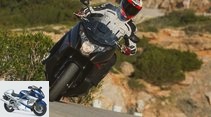
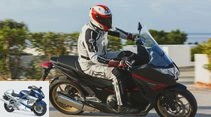
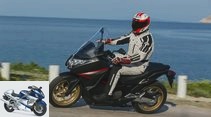
24 photos
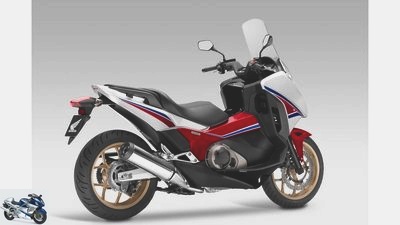
Manufacturer
1/24
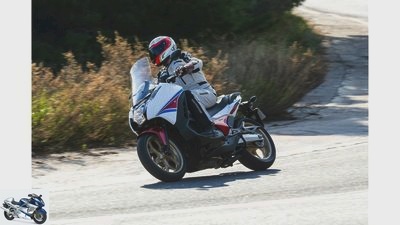
Manufacturer
2/24
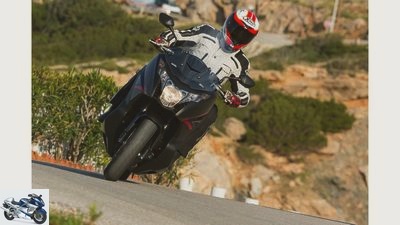
Manufacturer
3/24
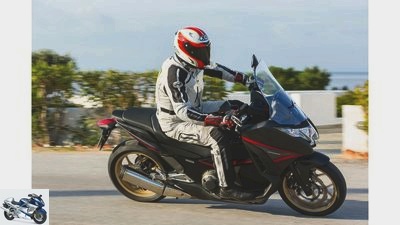
Manufacturer
4/24
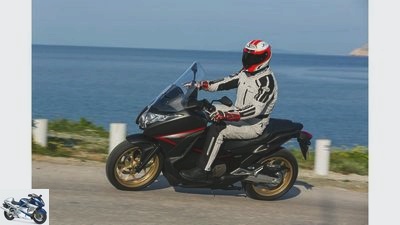
Manufacturer
5/24
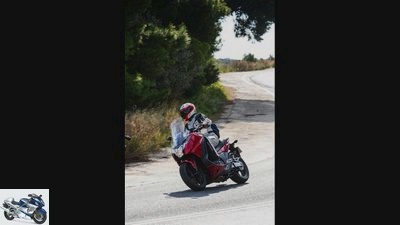
Manufacturer
6/24
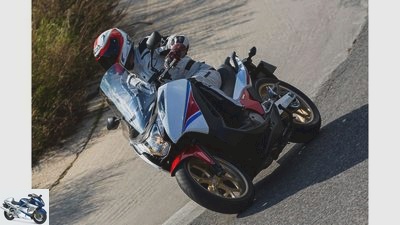
Manufacturer
7/24
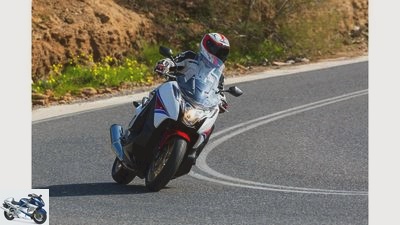
Manufacturer
8/24
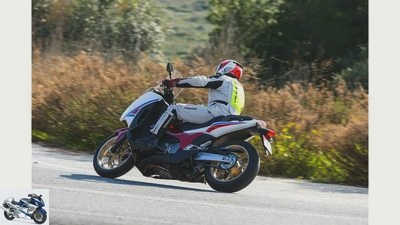
Manufacturer
9/24
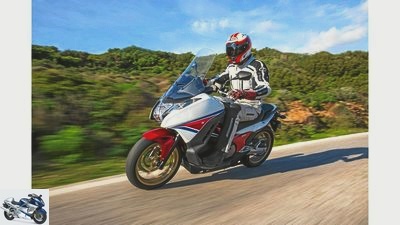
Manufacturer
10/24
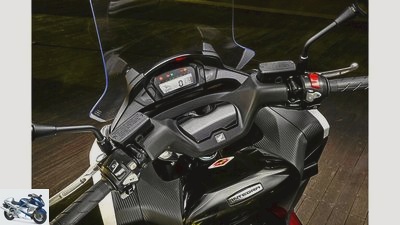
Manufacturer
11/24
The redesigned leg shield remains at a distance from the knees, and hand levers are used to brake on both sides.
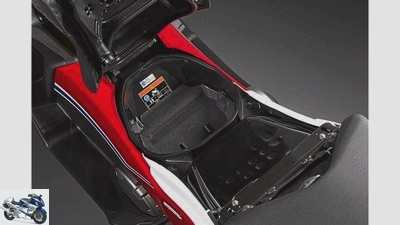
Manufacturer
12/24
The downside of the motorcycle base: high step-through and poor storage space under the pleasantly contoured seat.
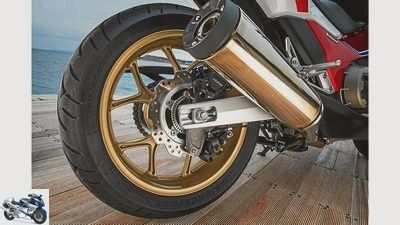
Manufacturer
13/24
The pretty, lighter cast aluminum swingarm only carries the Integra, not the NC models.
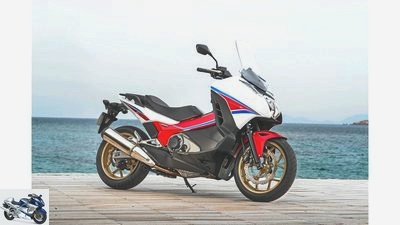
Manufacturer
14/24
The great tricolor paintwork is an eye-catcher, but costs 150 euros extra.

Manufacturer
15/24
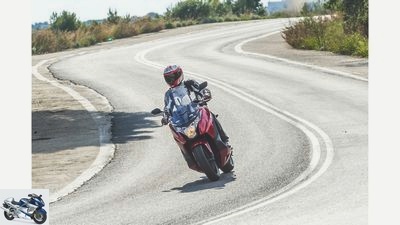
Manufacturer
16/24
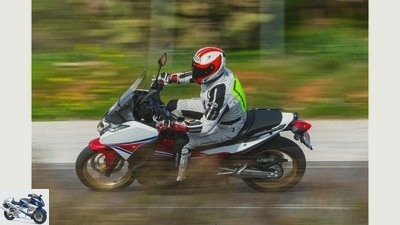
Manufacturer
17/24
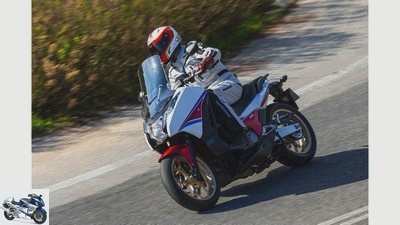
Manufacturer
18/24
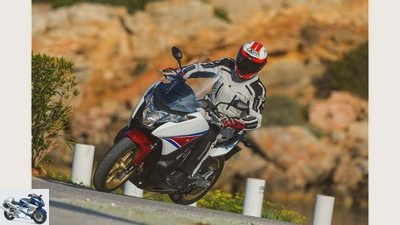
Manufacturer
19/24

Manufacturer
20/24
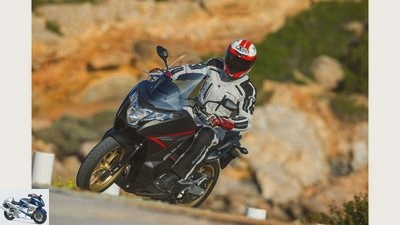
Manufacturer
21/24
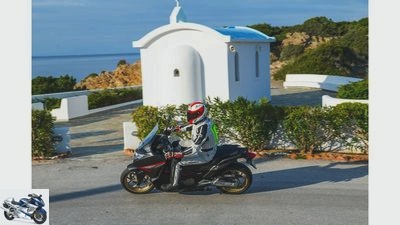
Manufacturer
22/24
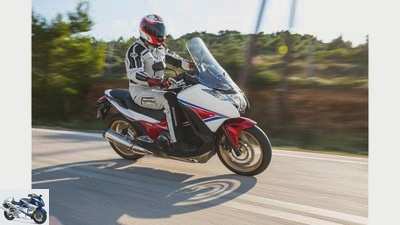
Manufacturer
23/24
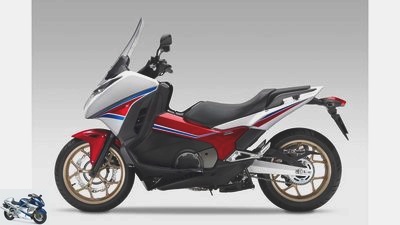
Manufacturer
24/24
Honda Integra in the test
Strength cure for the scooter on the NC platform
The development of the NC 700 platform has proven to be a real stroke of luck for Honda. Not only because the model variants S and X developed into top sellers. This is because other models can be generated on this platform. Such as the Honda Integra scooter introduced two years ago.
The Honda I.ntegra is not a motorcycle, not a scooter, it is – yes what actually? Honda calls it Scooter so we want to do that too. For 2014, Honda donated a small power injection to the NC series. So it’s logical that this facelift also benefits the Honda Integra. In concrete terms, this means: more displacement and more power. Four millimeters more bore turn the former 700 into a 750. And help to achieve a significant increase in performance. Instead of the previous 48, the Honda Integra is now powered by 55 horses – Alpha-Technik offers a 48 HP throttle kit (105 euros, www.alphatechnik.de). So that this happens in an even more comfortable way, the 750 was given a second balance shaft to combat vibrations more effectively.
Buy complete article
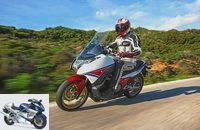
Honda Integra in the test
Strength cure for the scooter on the NC platform
Wider running boards, narrower bench
If long-legged people in particular kept coming into contact with the leg shield with their knees, the new Honda Integra now has significantly more space here. Wider running boards offer the feet more freedom of movement. The narrower contour of the bench with the same seat height is also pleasantly noticeable, as it enables more secure ground contact with the feet.
The power regimen is well received. The Honda Integra threads its way confidently through the hustle and bustle of the city, quickly emerging from the starting blocks at the traffic lights. Especially in sport mode. The sometimes chewing gum-like starting of scooters with centrifugal clutches, such as that offered by the BMW C 600, is alien to the Integra.
Honda Integra with noticeably more powerful torque
The strengthened Honda Integra also makes a splash outside of the urban barriers. Its torque, which is noticeably stronger than that of the 700, harmonizes well with the revised DTC. He masters intermediate sprints with the power of the torque, the automatic no longer overzealously shifts down with each faster turn of the gas. A kickdown can still be called up by turning the wrist. The gearshifts are smooth, and the automatic shifts down in a practical manner when braking in order to use the engine braking torque. And if you want to shift up or down earlier, you can always do this manually. In addition to all of this, the already economical two-cylinder in-line should, according to Honda, sip fuel a little more economically.
As expected, the Honda Integra looks very motorcycle-like in its unexcited driving behavior. The Integra is not overly motivated when changing lean angles, but stably on its way, the coordination of the spring elements is on the comfortable side, only short, hard edges, especially the spring strut, are somewhat shirt-sleeved. The pretty cast aluminum swingarm, which Honda says should save two kilograms of unsprung weight, is reserved for the Integra alone, the NC models have to be content with simple steel swingarms. But in terms of storage space under the bench, it still loses out against the NC models and other maxi scooters. On the drive side, he has clearly gained.
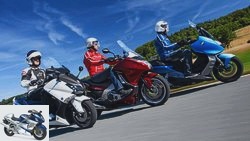
Scooter
Comparison test: BMW C 600 Sport, Honda Integra and Yamaha TMax
The large scooters from BMW, Honda and Yamaha in comparison
read more
Technical data Honda Integra
Engine: Water-cooled two-cylinder four-stroke in-line engine, an overhead, chain-driven camshaft, four valves per cylinder, rocker arm, wet sump lubrication, injection, Ø 36 mm, regulated catalytic converter, automatically operated dual clutch transmission, six-speed, O-ring chain.
Bore x stroke: 77.0 x 80.0 mm
Displacement: 745 cm³
Rated output: 40.3 kW (55 hp) at 6250 rpm
Max. Torque: 68 Nm at 4750 rpm
landing gear: Bridge frame made of steel, telescopic fork, Ø 41 mm, two-arm swing arm made of steel, central spring strut, directly hinged, adjustable spring base, disc brake front / rear, Ø 320/240 mm, ABS.
Cast aluminum wheels: 3.50 x 17; 4.50 x 17
Tires: 120/70 ZR 17; 160/60 ZR 17
measurements and weight: Wheelbase 1525 mm, steering head angle 63.0 degrees, caster 110 mm, spring travel f / h 120/120 mm, weight with a full tank 237 kg, tank capacity 14.1 liters.
Guarantee: two years
Colors: silver, red, black, tricolor paint (surcharge 150 euros)
Price / additional costs: 8490 euros / 265 euros
Related articles
-
Comparison test: Large scooter 2012
17 pictures 1/17 Here it comes: the scooter guard of the motorcycle veterans BMW, Honda and Yamaha and faces the class comparison ….
-
BMW C 650 GT scooter in the test
fact In the test: BMW C 650 GT 650 series scooter from BMW Sorry, dear BMW designers, but from the front your scooter looks like a sea bream. Let’s see if he does what …
-
Comparison test touring enduro bikes: Honda Transalp, Kawasaki Versys, Suzuki V-Strom 650
Jahn comparison test travel enduro: Honda Transalp, Kawasaki Versys, Suzuki V-Strom 650 Always on the wall, travel enduro does not necessarily mean BMW …
-
Comparison test Honda XL 600 V Transalp against Kawasaki KLE 500
Comparison test Honda XL 600 V Transalp against Kawasaki KLE 500 Silent Stars Never made it big. Others collect prices, they are cheap. Now the …
-
Artificial top test Honda Hornet 900 which stands out Low weight, good brakes, a powerful super sports engine: proven ingredients for a sporty …
-
Wellbrock Honda CB 1000 R and series CB 1000 R in the test
Bilski 26 pictures Bilski 1/26 Wellbrock-Honda CB 1000 R and the standard Honda CB 1000 R. Bilski 2/26 Ergonomics and Chichi stuff: Completely milled …
-
Comparative test of athletes: BMW S 1000 RR against Honda Fireblade
13 Bilder Kunstle 1/13 The on-board tool kit of the BMW almost ties in with old traditions. With the help of the nine-piece set you can …
-
fact top test Honda CBF 600 package deal All-round carefree packages are in ?? not only for summer holidays: With variable ergonomics and very …
-
50,000 km endurance test Honda Crosstourer
Bilski 35 pictures fact 1/35 The V-shaped headlight says what’s going on: Here comes a V4 machine. Your high touring windshield costs extra …
-
Suzuki, Honda and BMW travel enduros put to the test
Fisherman 23 photos faceCatcher.com 1/23 Mid-range travel enduros from Suzuki, Honda and BMW in a comparison test. faceCatcher.com 2/23 Procedure? No, U…